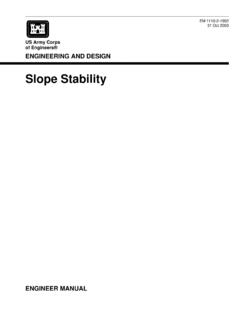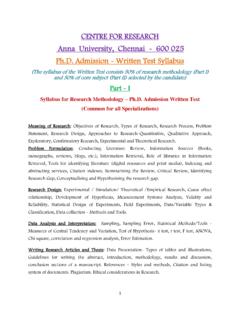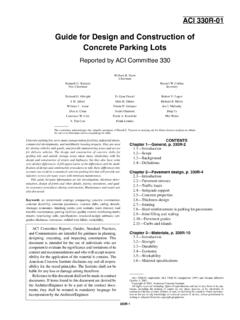Transcription of DESIGN OF AXIAL-FLUX PERMANENT-MAGNET LOW-SPEED …
1 Lappeenrannan teknillinen yliopisto Lappeenranta University of Technology Asko Parviainen DESIGN OF AXIAL-FLUX PERMANENT-MAGNET LOW-SPEED MACHINES AND PERFORMANCE COMPARISON BETWEEN RADIAL-FLUX AND AXIAL-FLUX MACHINES Thesis for the degree of Doctor of Science (Technology) to be presented with due permission for public examination and criticism in the auditorium 1382 at Lappeenranta University of Technology, Lappeenranta, Finland on the 19th of April, 2005, at noon.
2 Acta Universitatis Lappeenrantaensis 208 ISBN 952-214-029-5 ISBN 952-214-030-9 (PDF) ISSN 1456-4491 Lappeenrannan teknillinen yliopisto Digipaino 2005 ABSTRACT Asko Parviainen DESIGN OF AXIAL-FLUX PERMANENT-MAGNET LOW-SPEED MACHINES AND PERFORMANCE COMPARISON BETWEEN RADIAL-FLUX AND AXIAL-FLUX MACHINES Lappeenranta 2005 153 p. Acta Universitatis Lappeenrantaensis 208 Diss. Lappeenranta University of Technology ISBN 952-214-029-5, ISBN 952-214-030-9 (PDF), ISSN 1456-4491 This thesis presents an alternative approach to the analytical DESIGN of surface-mounted AXIAL-FLUX PERMANENT-MAGNET machines.
3 Emphasis has been placed on the DESIGN of AXIAL-FLUX machines with a one-rotor-two-stators configuration. The DESIGN model developed in this study incorporates facilities to include both the electromagnetic DESIGN and thermal DESIGN of the machine as well as to take into consideration the complexity of the PERMANENT-MAGNET shapes, which is a typical requirement for the DESIGN of high-performance PERMANENT-MAGNET motors. A prototype machine with rated 5 kW output power at 300 min-1 rotation speed has been designed and constructed for the purposes of ascertaining the results obtained from the analytical DESIGN model.
4 A comparative study of LOW-SPEED AXIAL-FLUX and LOW-SPEED radial-flux PERMANENT-MAGNET machines is presented. The comparative study concentrates on 55 kW machines with rotation speeds 150 min-1, 300 min-1 and 600 min-1 and is based on calculated designs. A novel comparison method is introduced. The method takes into account the mechanical constraints of the machine and enables comparison of the designed machines, with respect to the volume, efficiency and cost aspects of each machine.
5 It is shown that an AXIAL-FLUX PERMANENT-MAGNET machine with one-rotor-two-stators configuration has generally a weaker efficiency than a radial-flux PERMANENT-MAGNET machine if for all designs the same electric loading, air-gap flux density and current density have been applied. On the other hand, AXIAL-FLUX machines are usually smaller in volume, especially when compared to radial-flux machines for which the length ratio (axial length of stator stack vs. air-gap diameter) is below The comparison results show also that radial-flux machines with a low number of pole pairs, p < 4, outperform the corresponding AXIAL-FLUX machines.
6 Keywords: PERMANENT-MAGNET synchronous motor, AXIAL-FLUX PMSM, radial-flux PMSM UDC : Parts of this study were published previously under copyright: 2004 IEEE. Reprinted, with permission from: Parviainen, A., Niemel , M., Pyrh nen, J., "Modeling AXIAL-FLUX PERMANENT-MAGNET Machines". IEEE Transaction on Industry Applications. Vol. 40, No. 5, 2004, pp. 1333-1340. 2003 IEEE. Reprinted, with permission from: Parviainen, A., Niemel , M., Pyrh nen, J. "Modeling of AXIAL-FLUX PM Machines".
7 In Proceedings of IEEE International Electric Machines and Drives Conference, IEMDC 03, Madison, United States, 1-4 June 2003, pp. 1955-1962. Acknowledgements I wish to express my gratitude to my supervisor Prof. Juha Pyrh nen for his valuable comments and guidance throughout the work as well as for giving me the opportunity to participate in several other interesting projects in the process of and related to my work. I wish to thank the pre-examiners Prof. Essam Hamdi and Prof.
8 Valeria Hrabovcova for their valuable comments and corrections. I wish to thank Markku Niemel for his comments and suggestions related to this work and for his encouraging guidance during the laboratory work. I am also grateful to Jouni Ik heimo, Jari Pekola and Mr. Juhani Mantere from ABB for their valuable advice, discussions and support during the work. The project was partly financed by Carelian Drives and Motor Centre, CDMC, which is the research centre of ABB companies and Lappeenranta University of Technology, and the Academy of Finland.
9 I am indebted to the laboratory personnel, Mr. Harri Loisa, Mr. Jouni Ryh nen and Mr. Martti Lindh, for the professional assistance during the construction of the laboratory prototypes as well as for the practical arrangements in the laboratory. I also wish to thank all my friends; their support has been very important to me. Special thanks are due to Patrick Lombard and Marc Vilcot from CEDRAT, who, in the beginning of the project , offered me the opportunity to work at CEDRAT. The experience I gained on the various aspects of finite element analysis during that working period proved to be very useful later on.
10 Special thanks are due to FM Julia Vauterin for valuable work to perform the language proof of this thesis. Financial support provided by Tekniikan Edist miss ti , Jenny ja Antti Wihurin rahasto, Lahja ja Lauri Hotisen rahasto, Lappeenrannan teknillisen yliopiston tukis ti and Walter Ahlstr min s ti is highly acknowledged. For Pia Salminen, I wish to express my special thanks for her encouragement and understanding during the last, busy years. Finally, I m deeply indebted to my parents, Kaisa and Veikko, as well as to my brother Jaakko for their untiring support throughout all the years.













